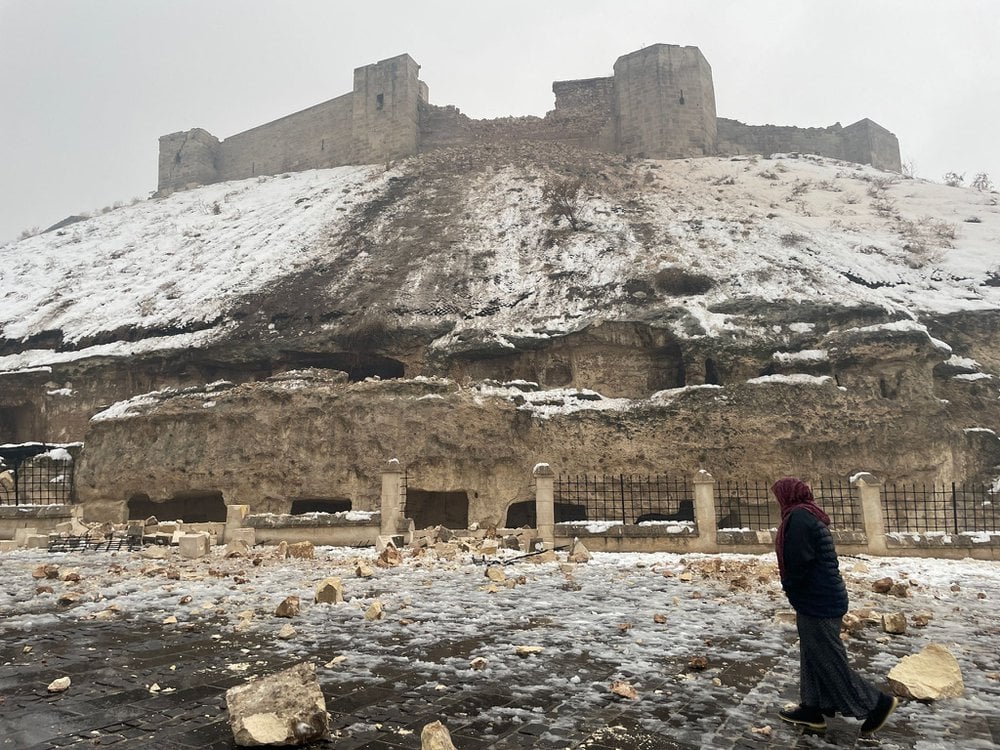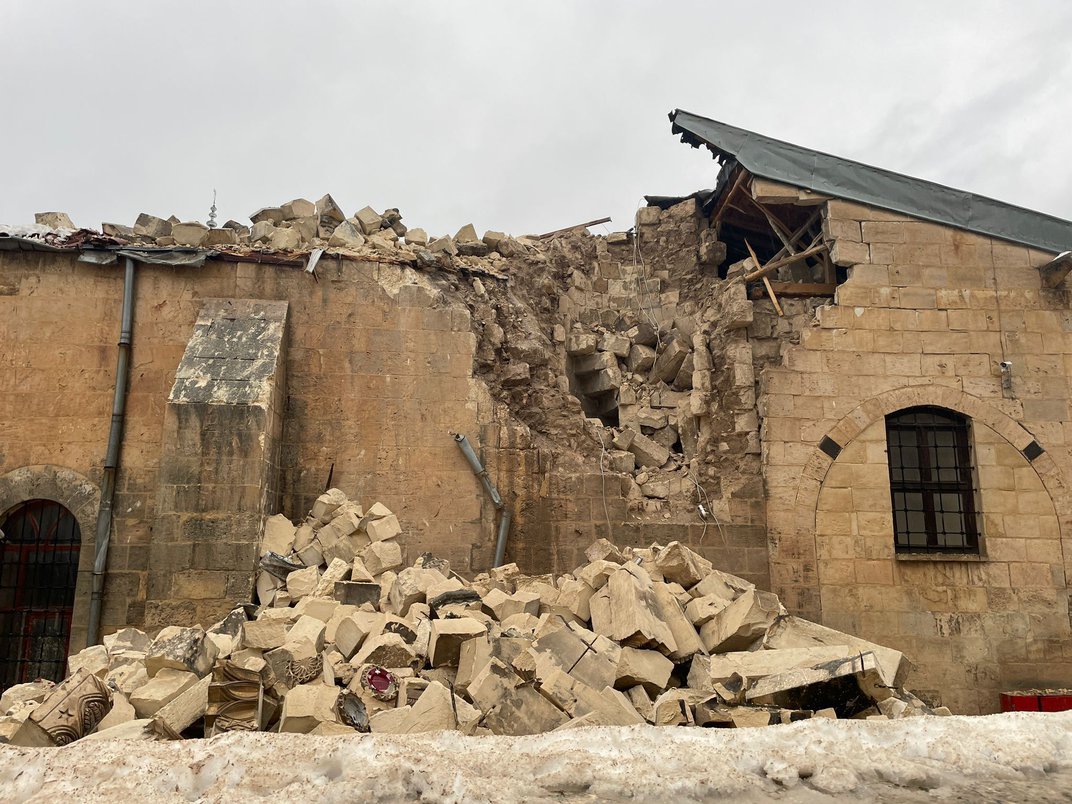Earthquakes Damage 2,000-Year-Old Castle in Turkey
The 7.8-magnitude quake also harmed other historic structures throughout Turkey and Syria

A Roman-era castle was badly damaged by the devastating earthquakes that struck Turkey and Syria on Monday, reports Mehmet Akif Parlak for the Turkish state-run news agency Anadolu. Parts of the historic structure in the city of Gaziantep, Turkey, have collapsed, leaving stones and iron railings scattered across the surrounding sidewalks and roads.
The first earthquake—a magnitude 7.8 event—began in the early morning hours of February 6 near Gaziantep, reports the New York Times’ Pablo Robles. Later that day, a second 7.5-magnitude aftershock followed. Traveling across borders, the quakes could be felt in countries as far as Lebanon and Israel.
Authorities are still sifting through the rubble, but by February 8 the death toll had topped 11,000, with tens of thousands more injured, reports NBC News. The quake also damaged thousands of structures, including some that had stood for centuries.
Built nearly 2,000 years ago during the second and third centuries, Gaziantep Castle initially served as a Roman watchtower, per the Times’ Cora Engelbrecht. Then, under Justinian I, who reigned as Byzantine emperor from 527 to 565, crews expanded the castle to its current form.
As of last year, the building housed the Gaziantep Defense and Heroism Panoramic Museum, which told the story of the city’s role during the Turkish War of Independence.

The structure next to the castle—the historic Şirvani Mosque—also partially collapsed during the quake, Anadolu reports. According to UNESCO, several more buildings collapsed in the city of Diyarbakır, which is home to a World Heritage site. Other World Heritage sites near the quake’s epicenter—including Göbekli Tepe, Nemrut Dağ and Tell of Arslantepe—could be in danger, per UNESCO, though the agency hasn’t yet received reports about them.
In total, the natural disaster damaged an estimated 1,700 buildings across ten cities in Turkey, reports CNN’s Lilit Marcus.
It also damaged the 13-century citadel in Aleppo, Syria, as well as several other historical and archaeological sites, per a statement from the Syrian Directorate General of Antiquities and Museums.
UNESCO has offered assistance to both countries. In a statement, the agency says it’s mobilizing experts to “establish a precise inventory of the damage” and “safeguard these sites with the cooperation of national authorities, while being aware that their priority at this stage is emergency disaster, rescue and relief.”
Turkey experiences strong earthquakes because it’s located along the boundary of three large tectonic plates: the African, Arabian and Anatolian plates, writes Jenny Jenkins, an Earth scientist at Durham University, in the Conversation. “The movement of the tectonic plates builds up pressure on fault zones at their boundaries. It is the sudden release of this pressure that causes earthquakes and ground shaking.”
But while the area experiences many earthquakes, she adds, this week’s quake’s were “particularly large and devastating, as so much energy was released.”

